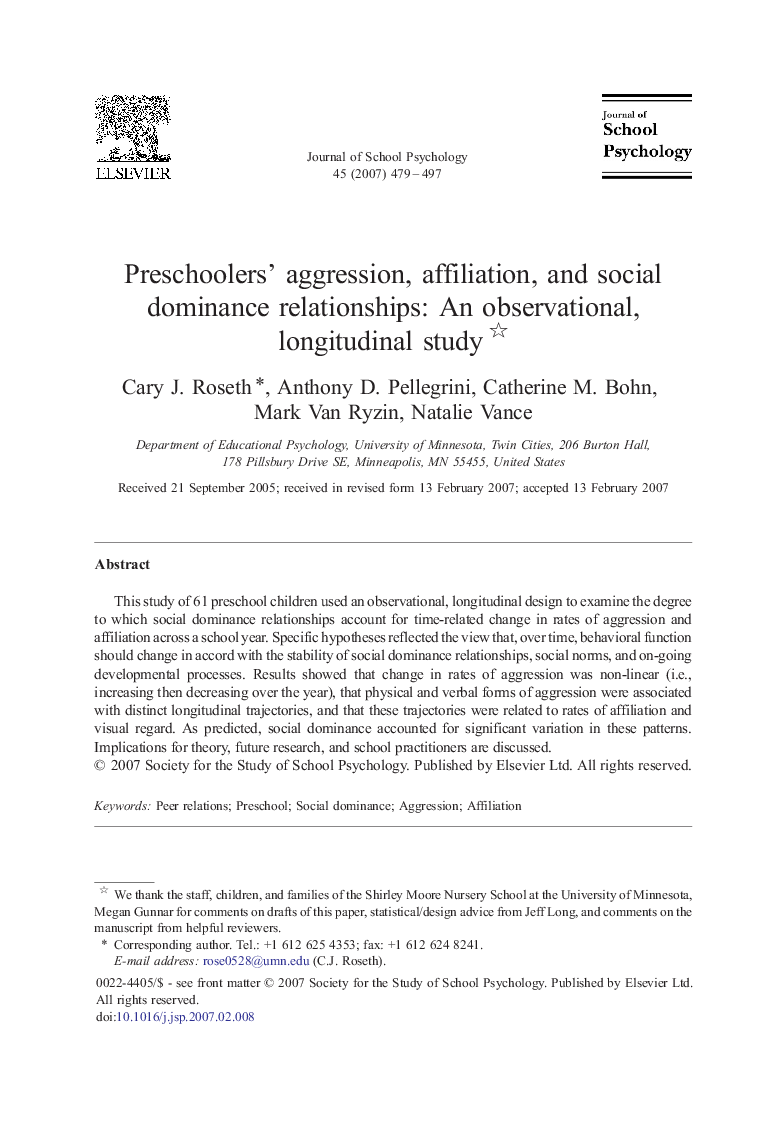| Article ID | Journal | Published Year | Pages | File Type |
|---|---|---|---|---|
| 363693 | Journal of School Psychology | 2007 | 19 Pages |
This study of 61 preschool children used an observational, longitudinal design to examine the degree to which social dominance relationships account for time-related change in rates of aggression and affiliation across a school year. Specific hypotheses reflected the view that, over time, behavioral function should change in accord with the stability of social dominance relationships, social norms, and on-going developmental processes. Results showed that change in rates of aggression was non-linear (i.e., increasing then decreasing over the year), that physical and verbal forms of aggression were associated with distinct longitudinal trajectories, and that these trajectories were related to rates of affiliation and visual regard. As predicted, social dominance accounted for significant variation in these patterns. Implications for theory, future research, and school practitioners are discussed.
